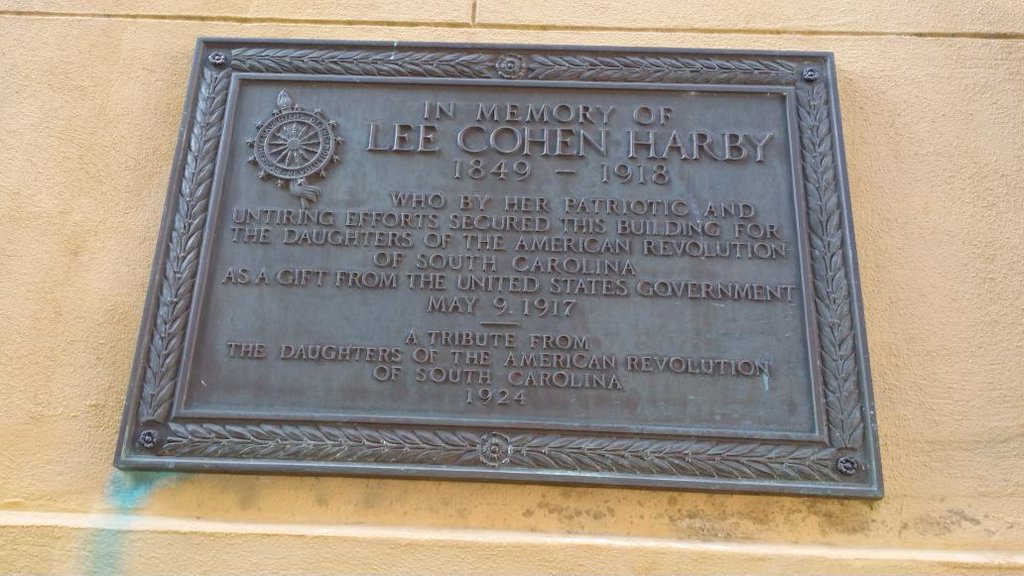Lee Cohen Harby
One of the most historic buildings in Charleston, the Exchange was built as a custom house before the Revolution, and became the site of much political activity during and after the War for Independence. Here South Carolina ratified the U.S. Constitution, and President George Washington was entertained on his 1791 visit to the city. The building served briefly as Charleston’s city hall, and later as the U.S. Post Office. Its survival and preservation is due partially to Lee Cohen Harby, who led the committee of the Rebecca Motte Chapter of the Daughters of the American Revolution to oversee the transfer of the building from the federal government to the DAR, and to keep it as a proper memorial to the history of the nation and the city.
Negotiations for the project began in 1899, and in 1917 the United States government gave the Exchange building to the Daughters of the American Revolution of South Carolina. A plaque on the north wall commemorates Mrs. Harby, a daughter of Marx E. Cohen and Armida Harby Cohen, whose Revolutionary War ancestor was her great-grandfather Marks Lazarus (1757–1835). Lazarus rose to the rank of Sgt. Major under Col. John Hayden and was engaged in the siege of Fort Moultrie and in the battles around Charleston and Savannah. In May 1780, he was made prisoner and probably detained until the end of the war.
For more information on Lee Cohen Harby, see the Lee Cohen Harby papers, Special Collections, College of Charleston.
